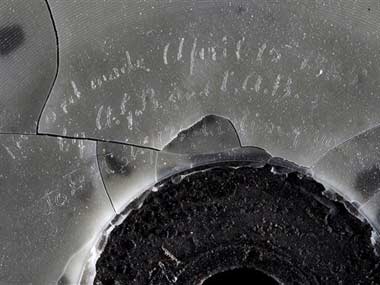The sound is scratchy. You have to strain to understand what is being said. But the historical significance is clear. For the first time in history, we know what Alexander Graham Bell sounds like. The clip which was recorded in 1885 was unveiled just last week by the Smithsonian. Researchers have identified the voice of Alexander Graham Bell for the first time in some of the earliest audio recordings held at the Smithsonian Institution. The National Museum of American History announced that Bell’s voice was identified with help from technicians at the Library of Congress and the Lawrence Berkeley National Laboratory in California. Bell made the recordings with his partners at the Volta Lab in Washington, D.C and left them with the Smithsonian, to protect against a patent dispute. [caption id=“attachment_736749” align=“alignleft” width=“380”]  We now know what Alexander Graham Bell sounds like. AP[/caption] Bell conducted his sound experiments between 1880 and 1886, collaborating with his cousin Chichester Bell and technician Charles Sumner Tainter. But for over a century, researchers weren’t quite sure whether they could decipher the sound. “This is new technology that’s been developed by our partners at the Lawrence Berkeley Lab; it’s a non-invasive technology using lasers,” Shari Stout, collections manager at the Smithsonian’s National Museum of American History told NPR. “They started out recovering commercial records. It turns out our curator read about it in The New York Times.” Physicist Carl Haber at the Lawrence Berkeley National Laboratory in Berkeley, California, had succeeded in decoding sound from early recordings made in Paris in 1860. He and his team created high-resolution optical scans converted by computer into an audio file. Read the entire article HERE
The National Museum of American History announced that Bell’s voice was identified with help from technicians at the Library of Congress and the Lawrence Berkeley National Laboratory in California.
Advertisement
End of Article


)
)
)
)
)
)
)
)
)



